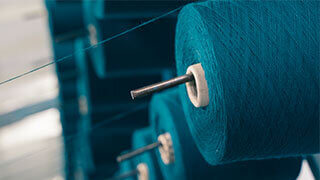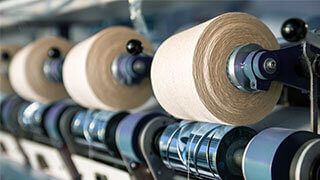Yarn Spinning: Fiber Opening & Cleaning
Opening
After the appropriate fiber properties have been decided on, the selected bales are prepared and arranged for their placement into a laydown. A typical laydown may include as few as 40 bales or as many as 90 or more.
This configuration ensures proper dispersion of the many different variables from bale to bale and also places them in a position that the top feeder or bale plucker can use them. Usually, this is in a linear fashion but other methods of feeding may also be found.
The bale plucker moves back and forth along the laydown removing just a small amount of fiber from each bale on every pass. This ensures adequate blending by minimizing the amount of fiber removed from each bale and maximizes the number of bales fed per unit time.
From the plucker, the opened tufts are moved along using fans, airflow, and a series of ducts, much like those used in the heating and air conditioning systems in residential and commercial buildings. The fiber flows in this fashion and is directed to the next machine in this process.
To further ensure good blending, a multi-cell blender may be used. This machine randomly fills and then empties its chambers back into the process flow.
Cleaning
From the opening and blending processes, the open fiber tufts are transported to the first of what may be multiple cleaning machines or steps. The first cleaning machines are usually designed to be coarse cleaners. That is, they are designed to remove the larger and heavier trash particles. Fine cleaners will be found last in the cleaning line and just before carding.
Cleaning machines use a number of very basic principles in order to accomplish their goal. The trash or unwanted contents in the opened tufts of fiber are normally denser and heavier than the good fiber.
These principles take advantage of this. The machines’ designs use gravity, centrifugal force, and airflow combined with some type of beating action.
Usually, grid bars may be found under the beaters in most cleaning machines. The unwanted trash falls out between the bars and is sucked away to a central collection point. The grid bars can be adjusted to take out more or less trash depending on the fiber being used, the spinning process, and the end product requirements.


